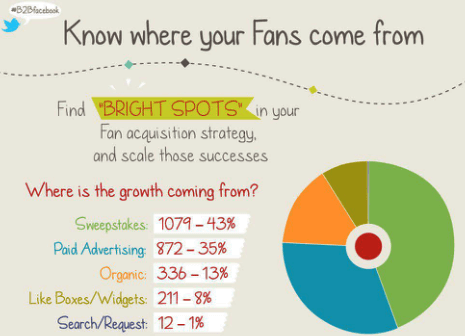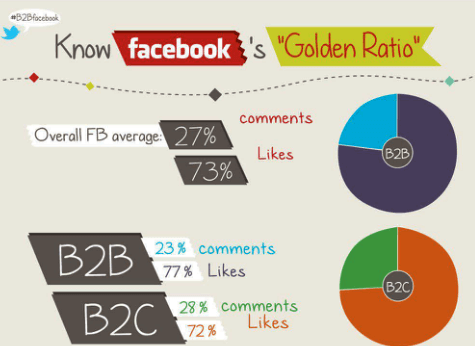A B2B case study (with learnings for B2C too)
Here's an interesting case study about how Eloqua ran a project on Facebook company page optimisation.
We've summarised some tips based on this project run by BrandGlue, which grew the Eloqua Fan page by 2,500 percent, increased Facebook-referred traffic by 150% and increased Fan engagement to about 3x industry averages. The creative was executed by JESS3 and PageLever supplied the data. These are main learnings we took from the case:
1. Know Facebook's "Golden ratio"
The overall Facebook ratio for status updates is:
- 27% have a comment
- 73% have a like
The study show the breakdown for B2B and B2C; they're similar:
2. Start by stopping.
If you fall behind this target avoid:
- Declarative status updates
- Text-only status updates
- Inconsistent posts
- Repetitive topics
- Back-to-back frequency
- Don't forget referral sources - 92% of referrals within Facebook occurred though searches compared to 8% from the stream
3. Create a Landing Tab
This is well known, but a good place to start if you're not already. Like any landing page, this potentially has a big impact on your conversion rate. An A/B test run on the Mint.com page gave a 73% higher fan conversion rate when visitors were served a landing tab.
4. Understand your acquisition sources
Eloqua use the concept of “bright spots” or seemingly small successes when, if scaled, can make a significant difference in a movement. Sweepstakes are their "bright spot" but paid advertising works well too:

5. Understand Fan behaviour
Eloqua advise that fans engage with your content passively, but you acquire them via direct action. Translation: members have to do something (search for you, click an ad, enter a sweepstakes) to become a fan, but once they are a fan, they receive your messages in their newsfeed. Seldom (as in only 1% of the time) do they return to your brand page.
6. Take care with automated publishing tools
This is a contentious tip. Historically, it was speculated that the Facebook algorithm, EdgeRank, frowned upon content published by third-party tools. Recent reports have suggested that this is no longer the case. However, in our experiment, we found that updates pushed into Eloqua’s newsfeed by an automated publisher suffered 61% less visibility than manually published content. Certainly something we need to change on the Smart Insights Facebook!
To summarise, the key to EdgeRank is fan engagement. If your fans Like, Share and Comment on your content, those behaviors send social signals to Facebook that you are a quality member of the community that publishes quality content. Furthermore, much like Google’s PageRank, your EdgeRank will rise, exposing more of your fans to your content. So before posting anything to Facebook stop and think: Is this engaging or is it self-serving? If it is the former, it may be another bright spot. If it is the latter, you might want to re-think hitting the “post” button.








